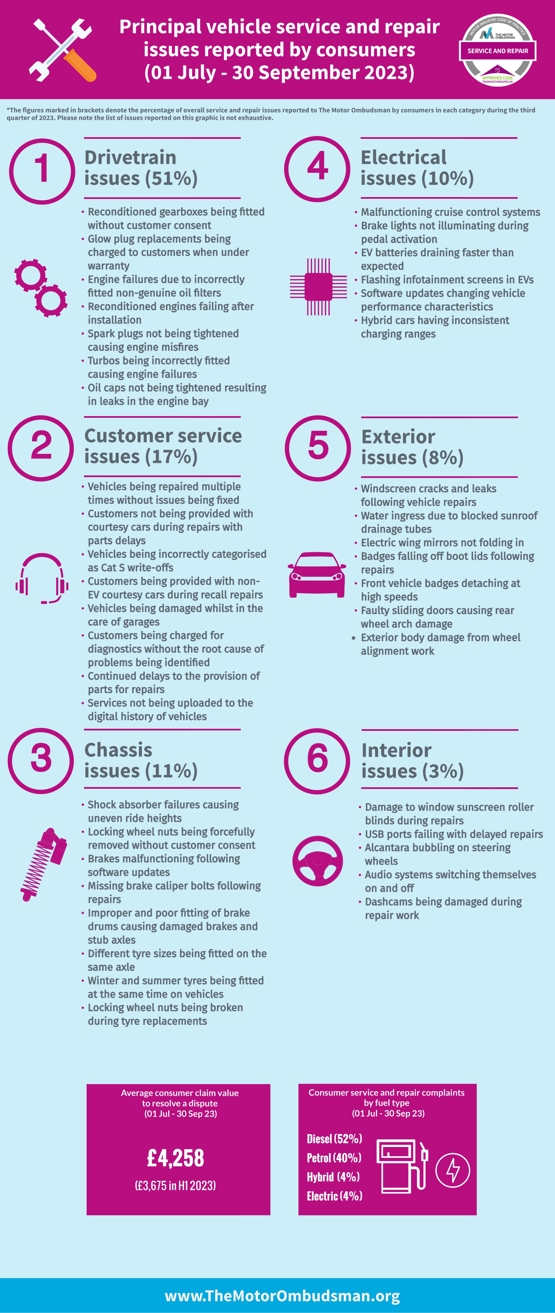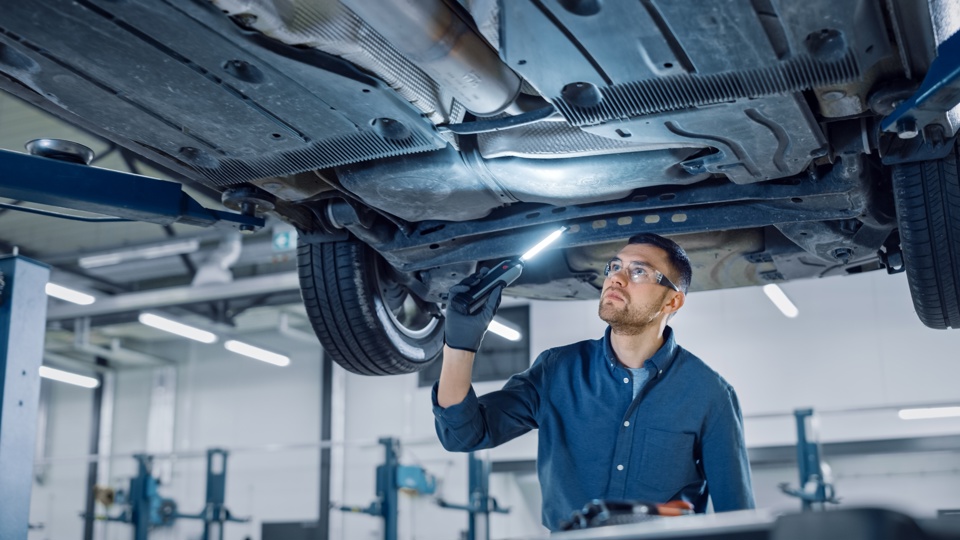Motorists are far more likely to complain to the industry watchdog as the cost-of-living crisis continues to put pressure on household budgets.
The independent Motor Ombudsman said it has seen the highest volume of service and repair cases brought by consumers to its dispute resolution service in a single quarter so far this year.
It said that in the three months to October, the Ombudsman for the automotive sector accepted a total of 1,348 new submissions, up 10% from 1,226 in the second quarter, and equating to a 13% increase compared to the first quarter.
the number of disputes it received also surpassed last year’s tally by 9% for the same period with diesel cars driving over half of the service and repair complaints in the past three months, followed by petrol models (40%), electric vehicles (4%), and hybrids (4%).
The uptick in cases has also been mirrored by a record number of people getting into contact with the ombudsman “most likely sparked by the financial pressures associated with the cost of living crisis, and a greater likelihood to make a complaint to help recoup perceived losses, rather than being a reflection of declining standards in this area of the automotive sector,”
Just over half of complaints stemmed from disputes over “drivetrain” category, with the engine responsible for 73% of complaints.
This is followed by the transmission (15%), and the fuel and exhaust systems driving 12% of complaints respectively in this category. Examples of concerns raised by consumers in the drivetrain area, included engine failures due to incorrectly fitted oil filters and turbos, and reconditioned gearboxes being installed on vehicles before getting customer consent.
The level of customer service experienced by consumers during a routine service or ad hoc remedial work accounted for the second highest number of disputes (17%).
“An element of discontent originated from factors, such as prolonged delays to repairs, sometimes without the provision of a courtesy car, vehicles being damaged whilst in the care of a business, and customers paying for diagnostic work that did not identify the root cause of the faults reported,” said the watchdog.
Issues relating to the chassis area of the vehicle, which takes in the likes of the suspension, brakes, wheels, and the steering, were responsible for just over 10% of complaints. Different tyre sizes being fitted on a single axle, and cars having winter and summer tyres at the same time were cited. Other disputes related to shock absorber failures causing uneven ride heights, and brakes malfunctioning following software updates.
Electrical issues (10%) were also a cause for consumer complaints during the last quarter, with cruise control systems malfunctioning, EV batteries draining faster than expected, and brake lights not illuminating during pedal activation, amongst the faults.
On the subject of the exterior (8%), bodywork defects were a cause for concern, with consumers reporting dissatisfaction about paint blistering and poor quality repairs. There were equally failures of external fixtures, such as electric wing mirrors not folding, EV charging flaps not closing, and sliding doors causing rear wheel arch damage.
Complaints concerning the interior of vehicles (3%) ranged from Alcantara bubbling on steering wheels, to repairs causing window sunscreen roller blinds and USB ports to stop functioning.
During the third quarter of 2023, the three most requested resolutions were a free of charge repair (28%), followed by compensation (25%), and a full refund (22%). Where a monetary value was attributed by consumers to their preferred resolution when submitting their case to The Motor Ombudsman, this stood at an average of £4,258, an increase of 16% versus the figure of £3,675 seen for the first six months of 2023.





















Login to comment
Comments
No comments have been made yet.